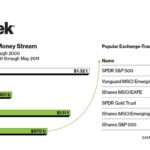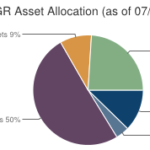Sector rotation became popular years ago as investors realized that whole sectors were “hot or not†together, moving in sync as if there were no distinguishable differences between stocks in the same industry.
Fast forward several years and sector rotation funds are finally catching on. Bancshares recently launched the Huntington US Equity Rotation Strategy ETF (HUSE). Actively-managed, the HUSE fund will be managed by the same manager as the Huntington Rotating Markets mutual fund (HRITX), which has delivered market-beating performance for the last 10 years. Few active ETF managers can claim the same track record.
Here’s a chart of the mutual fund version of the sector rotation ETF since inception:

How the Sector Rotation ETF Works
The HUSE portfolio will hold stocks in the S&P Composite 1500, allowing it to move between stocks ranging in size from small to large caps. Security selection will be driven by sectors, however, meaning that the weight of portfolio holdings will be adjusted between the 10 sectors in the S&P 500 index based on macro trends, earnings potential, and valuation.
Rotation by sector feeds on the temporary mispricing that comes about following a small economic slowdown or minute change to the business cycle. One can look to cyclical stocks like restaurants and automakers to see how quickly their businesses fell during the 2009 recession, and how quickly business rebounded when the economy improved. Conversely, stable businesses like pharmaceuticals and high-dividend utilities stocks shed hardly any value, but never moved strongly as the economy improved – their sales were unaffected by slowdown or reversion.
Asset managers who can read macro trends and move a portfolio will beat the market with sector rotation tactics. The fund does have some dead weight from a higher-than-average .95% expense fee. The expense is fair for actively-managed funds, but much higher than passive fund expenses.
Key Holdings
Sector rotation funds are known for higher turnover. At the time of writing, HUSE’s main holdings are all well-known with investors. The portfolio’s five largest holdings includes:
Apple Inc (AAPL)
Johnson & Johnson (JNJ)
Pfizer Inc (PFE)
Exxon Mobil Corp (XOM)
Merck & Co Inc (MRK)
The fund is also capitalization weighted, meaning that it will favor large cap stocks and give less attention to small cap names. Like many active and passive funds, the fund’s largest component is Apple Inc, which recently initiated a dividend like the other top holdings, which is key since almost half of total market returns over time are from dividends.
One can see from the list of the largest holdings that the fund is currently overweight consumer staples and pharmaceuticals, a defensive play for the future.
As with all actively-managed ETFs, there is some concern that management will not be able to duplicate past performance into the future. The fund’s mutual fund cousin does show a different balance of holdings than the exchange-traded fund, though some differences may be due to timing. Exchange-traded funds have to disclose their holdings every day whereas mutual funds make disclosures only once every few months (just one of many benefits of ETFs over mutual funds).
One would expect that disclosure requirements would keep the ETF from being invested exactly like the established sector rotation mutual fund. Fund managers will want to keep this and other funds in the family from easy front-running by other traders.
Disclosure: No positions in any ETFs, mutual funds, or stocks mentioned here.











{ 0 comments… add one now }